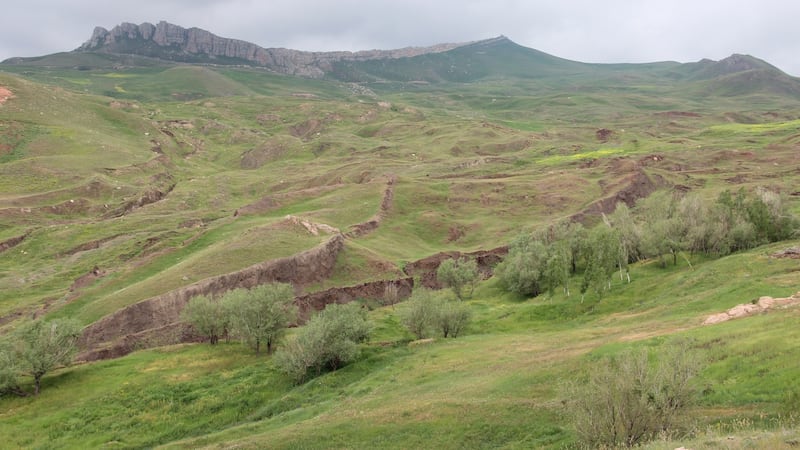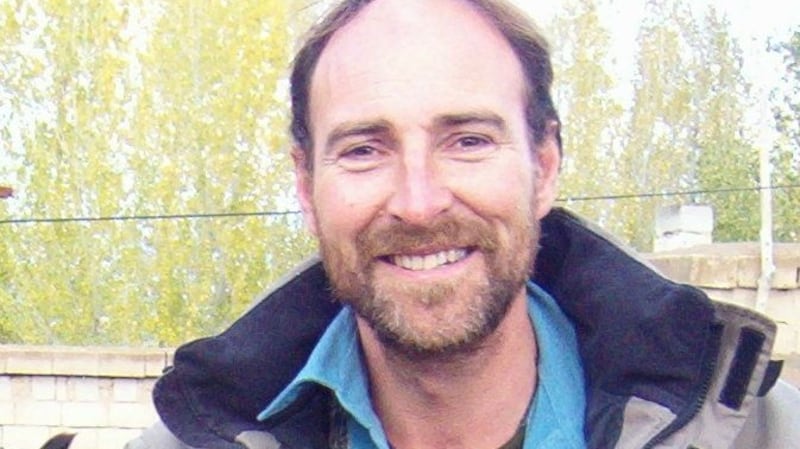Its Turkish name translates as “mountain of pain” and, according to legend, somewhere around Mount Ararat’s summit, buried under ice thousands of years old, is Noah’s Ark.
Since antiquity, explorers and evangelical Christians from around the world have descended on this mountain in eastern Turkey in a quest for answers to one of history's biggest myths: is Noah's Ark here? Does it really exist?
The Book of Genesis says that the ship came to rest on Ararat mountain after seven months and 17 days of a torrential flood ordered by God as punishment for man’s faults.


Modern expeditions to Ararat began in the mid-1800s when locals would tell passing travelling expeditions and merchants of the ark’s presence on the mountain.
A century later, a wave of wealthy American evangelicals and missionaries began flying out to the isolated mountain to try to find the ultimate proof that God created the Earth.
By the early 1980s, the New York Times noted ark-hunting around Mount Ararat had become a local cottage industry.
The potential for a historic discovery drew believers from all walks of life.
Donald Mackenzie was an average Scotsman from Lewis in the Outer Hebrides where he worked on building sites, got drunk at weekends and fought local bullies.
He wandered aimlessly through his 20s and 30s, but when a fight left him in hospital, he paused.
His brother Derick persuaded him to turn to God, and he began reading the Bible. Soon enough Mackenzie became infatuated with Noah’s Ark.
Again and again Mackenzie travelled out to Mount Ararat, spending weeks in a local town, taking tours up the mountain, often alone, and even chiding foreign trekkers for not going to Mass and for drinking on Sundays.
He would try to convince local Kurdish villagers to convert to the word of the Bible and to give up Ramadan fasting.
Early-season blizzard
Six years ago this month the born-again Christian went up Ararat to check out a gorge he suspected could offer some clues buried among the ice.
Just months before, a team from Hong Kong claimed it had found a fragment of the ark. Mackenzie, having spent years searching across the mountain, had to go see for himself.
He was soon caught in an early-season blizzard.
“Again, the weather has turned against us; it’s a case of returning, no choice,” he said in one of the last recordings of him alive.
“Apparently there is much more bad weather forecast so I’m going to head down today.”
A sewing kit, a pocket telescope and a business card with an Isle of Lewis address were later found at an abandoned campsite above 13,000 feet. Donald Mackenzie was never seen again.
Did he freeze to death in a blizzard or fall into a crevasse and die of his injuries? Was he attacked by wolves? Or was he kidnapped and murdered by Islamist extremists?
Some reports suggest Mackenzie’s negative comments about the prophet Muhammad and his proselytising unsettled local villagers in what is a conservative, violent part of Turkey where war raged with the Kurdish PKK.
The Scotsman was never afraid to cause a stir, and although his family says he didn’t court controversy, he rarely shied away from it.
“Once I gave Bibles to Erzurum University students [a large town in eastern Turkey],” he told a Turkish newspaper not long before his disappearance.
“The police came when they saw the Bibles. They seized the Bibles and took them to the police station. They held me for a few hours, then let me go.”
The fact that Mackenzie had no official permit to climb the mountain meant the authorities were slow to act when he went missing.
A search crew was put together weeks after he disappeared, and according to his brother Derick, their efforts were halfhearted at best.
“They said they didn’t really look for Donald at all because of the terrorist threat; if they send military people up there, they are at risk from the PKK,” he said.
“And of course, they’re not pleased with the fact that he was illegally on the mountain; this is something that also somewhat dampens their enthusiasm for finding him.”
Others claim to have had more success in the search for the ark. Months before Mackenzie went missing, an expedition by members of the creationist Noah’s Ark Ministries International group said they were “99.9 per cent” sure that timber they found on the mountain carbon-dated to 4,800 years ago, roughly the time of the Great Flood. The “findings” have since been dismissed by experts.
Others have spent millions making adventurist documentaries that are all about the dangerous and exciting journey, but inevitably lack any result.
Many scholars suggest the entire thesis behind the location of the ark is a misinterpretation of the Biblical story – or is, indeed, outright fiction.
Adding to the danger – and mystery – is the fact that Ararat borders Iran, Azerbaijan and Turkey's foe, Armenia, as well as being a designated military zone where PKK separatists have been active for decades.
So what are the chances the ark is up there, buried under the 44sq km of ice, some of which is 90m deep?
Asking locals, from tour guides to business owners to taxi drivers, draws just one answer: there is little question but that the ark exists and it is here.
In a part of Kurdish Turkey largely forgotten by the authorities in Ankara, locals depend heavily on cash from climbers and ark hunters, and so their lives depend on the myth.
Some locals point to the fact that the Great Flood is an event known and mentioned by civilisations across the known world, that it is not only a Bible story.
Potential evidence
At a site half an hour drive southeast of the town of Dogubeyazit is where many believe the ark actually rests – and there is potential evidence.
Named after the Turkish pilot who spotted an unusual formation there in 1959 while on a mapping mission for Nato, the earthen shape that makes up the Durupinar site certainly resembles the outline of a large ship.
Yet those who have dedicated their lives to studying biblical civilisations say the story just doesn’t add up.
"Whether a large boat could survive to this day raises the issue of chronology. Biblical fundamentalists operate in a frame quite detached from what geological science provides," said Paul Zimansky of Stony Brook University in New York.
“So if the ark is only 6,000 years old or so, then it could survive, but that is millennia after the appearance of the first settlements in the Near East, and these can be followed archaeologically without any intervening universal flood until the present.”










